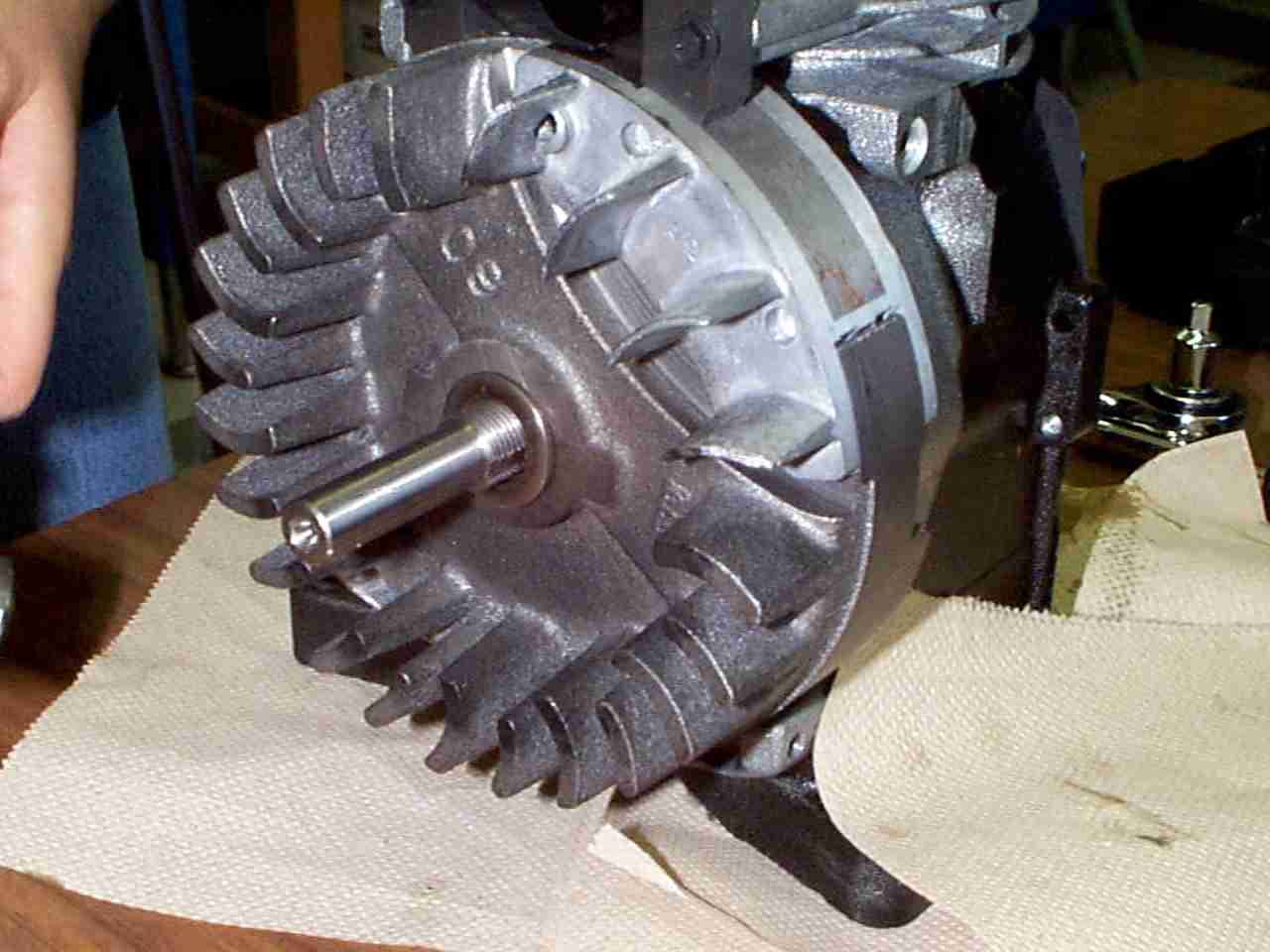
The flywheel is a cast iron, aluminum, or zinc disk that is mounted at one end of the crankshaft to provide inertia for the engine. Inertia is the property of matter by which any physical body persists in its state of rest or uniform motion until acted upon by an external force. Inertia is not a force, it is a property of matter. During the operation of a reciprocating engine, combustion occurs at distinct intervals. The flywheel supplies the inertia required to prevent loss of engine speed and possible stoppage of crankshaft rotation between combustion intervals.
During each stroke of an internal combustion engine, the flywheel, crankshaft, and other engine components are affected by fluctuations in speed and force. During the power event in a four-stroke cycle engine, the crankshaft is accelerated rapidly by the sudden motion of the piston and connecting rod assembly. The flywheel smooths out some of the rpm and force deviation by its resistance to acceleration. The inertia of the flywheel provides a dampening effect on the engine as a whole to even out radial acceleration forces and rpm deviations produced in the engine.
